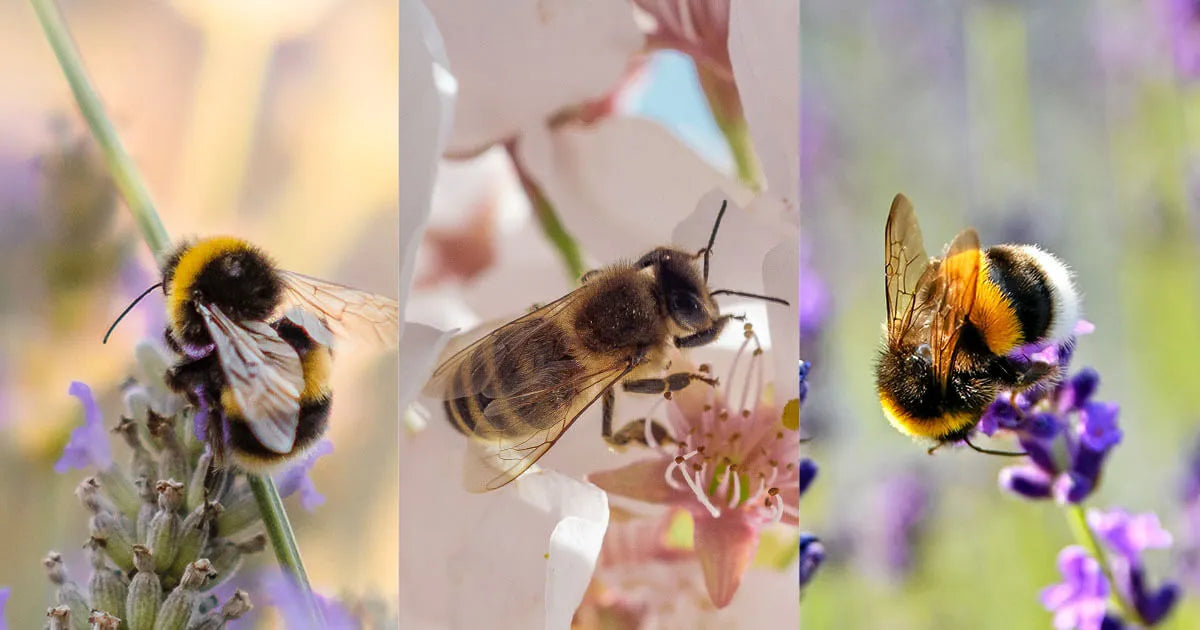Types of Bees from A to Z
Beekeeping
Growing up, most of us didn’t think twice about bees unless we were unfortunate enough to get stung. So you’d be forgiven for thinking, “Bees are those little yellow-and-black-striped guys who sting and make honey.” You’d be forgiven, but you’d be wrong on pretty much all counts:
- Bees come in a range of sizes
- Not all bees have yellow and black stripes
- Most bees you’re likely to interact with are female
- Not all bees sting humans – and many can’t sting at all
- Not many bees make honey as we typically think of it
Here’s a guide to some of the most common types of bees, so you’re prepared next time you spot one in the wild.

Honey Bees
Western honey bees make virtually all of the honey humans eat in the world, living in hives maintained by beekeepers. Because they’re not native to the U.S., they almost never form wild colonies. So, if you see one of these small bees in your neighborhood, that means there’s a local beekeeper within 2 miles or so.
They’re also unlikely to sting. They are “truly not interested in people at all. They are interested in plants and flowers. If you’ve been stung, it was most likely by a wasp such as a yellow jacket,” according to Becky Griffin of the Center for Urban Agriculture at the University of Georgia, who is also a certified beekeeper.

Bumblebees
The one other kind of bee that an average American can name, bumblebees are actually 49 different species of bee native to the U.S. They’re a bit larger than honey bees and covered in a “fuzzy” yellow hair. Like honey bees, they also live in large colonies, but build their nests in the ground, not up in trees. They haven’t been domesticated because they don’t make stores of honey in their nest, just enough to get by.

Carpenter Bees
Now we’re getting into the unknown a bit. Also known as wood bees, you’ve probably only seen these gals if you’ve had an infestation. They can bore directly into wood like a termite – or power drill! – and they’re quite a bit larger than other common bee species.
Carpenter bees are solitary. When one drills a hole in wood, it’s to make a nest for her brood. With no hive to feed, they have no need to make honey.
They’re not all about wood though. Like other bees, they’re critical pollinators, visiting thousands of flowers to collect their pollen and nectar for food. Scary as they might look, they’re also very unlikely to sting.

Sweat Bees
These tiny, tiny bees get their name because they’re attracted to nutritious human sweat. (All bees need a source of water to survive, ideally in small droplets or shallow puddles so they don’t drown.) Sweat bees are just 1/4th the size of a honey bee, making them extremely fast compared to lumbering bumblebees.
They are also incredible pollinators, able to reach into the smallest flowers with their tiny bodies. Though they collect lots of nectar and pollen, they don’t make honey. Much like honey bees, only females can sting, and they’re always hesitant to do so. If you manage to catch a glimpse of one zooming by, have no fear – she’s just tending your garden.

